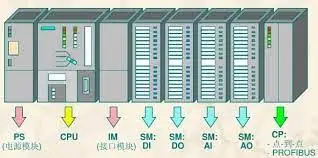PLC I/O MODULES

PLC AND I/O MODULES
A Programmable Logic Controller (PLC) is an industrial computer control system that automates repetitive tasks and processes. I/O modules are hardware components that enable communication between the PLC and external devices, acting as the interface for input and output signals.
PLC (Programmable Logic Controller):
- Function:
PLCs are used to control and automate a wide range of industrial equipment, such as motors, pumps, and valves, by executing a series of programmed instructions.
- Key Components:
A PLC typically consists of a CPU, power supply, input/output modules, and a communication interface.
- Operation:
PLCs monitor input signals from sensors and other devices, process this data based on a pre-programmed logic, and then control output devices accordingly.
- Applications:
PLCs are widely used in manufacturing, packaging, material handling, and other industries to improve efficiency, productivity, and safety.
- Function:
I/O modules are the bridge between the PLC’s CPU and the external world, facilitating the flow of information.
- Input Modules:
Receive signals from sensors and other input devices, converting them into a format the PLC can understand.
- Output Modules:
Receive control signals from the PLC and activate output devices like motors, actuators, and other equipment.
- Types:
I/O modules can be digital (for on/off signals) or analog (for continuous signals).
- Examples:
Input devices can include pushbuttons, switches, and sensors for temperature, pressure, or flow. Output devices can include electric heaters, valves, and relays.
- Importance:I/O modules enable PLCs to interact with a vast array of devices, making them essential for complex automation systems